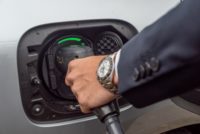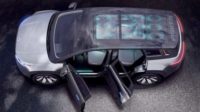Copper has been used in automotive applications for decades. It’s the material of choice for applications ranging from radiators to wiring harnesses. Copper is also a critical component in electric vehicles.
Besides cable and wire for electrical interconnections, the material is used in batteries, electric motors, inverters and charging stations because of its durability, malleability, reliability and superior electrical conductivity.
A recent report by IDTechEx predicts that automotive demand for copper will grow 5 percent annually over the next decade.
“Electrification will be the biggest boon to copper demand for cars,” claims James Jeffs, Ph.D., senior technology analyst at IDTechEx. “Copper is used throughout electric vehicle power trains, from foils in each cell of the battery to the windings of an electric motor. In total, each electric vehicle can generate over 30 kilograms of additional copper demand.
“Autonomy and electrification will drive the growth, but the component that [accounts for the majority of] demand will still be the wiring harness,” says Jeffs. “The wiring harness is the central nervous system for a car, connecting all the sensors, actuators, lights and more to the vehicle's brains.
“Each component in the system will require multiple wires responsible for communication and power delivery,” explains Jeffs. “With vehicles today being so complex, containing hundreds of wired components, the wiring harness has expanded to thousands of individual wires, totaling kilometers of overall length.
“Some players, like Tesla, are working hard to optimize the networking of the vehicle, cutting out system redundancy, thousands of meters of cables and kilograms of weight per vehicle,” Jeffs points out. “This can be helped with a system architectural change.
“[Some] Tier Two suppliers, like NXP, foresee an emerging zonal architecture approach where wired components are grouped by location rather than function,” claims Jeffs. “This can help to eliminate redundancy in the wire harness, but making the most of zonal architectures requires more of a harness-first mindset rather than the wiring being an afterthought.”
According to Jeffs, optimization is only one of the threats to copper consumption in vehicles. Substitution with aluminum, 48-volt systems with smaller gauges and wireless communication are all set to reduce copper in the wiring harnesses. These reduction factors will be countered by the increasing complexity of vehicles.
Jeffs believes that future lithium-ion battery chemistries will have an impact on the copper intensity of cells, with higher energy cells typically returning lower copper intensities. He says there has also recently been revised interest in permanent magnet-free motors because of neodymium price volatility.
“Wound-rotor synchronous motors are one example where the permanent magnet is effectively replaced with copper electromagnets, nearly doubling the copper intensity compared to regular permanent magnet motors,” says Jeffs.
Advanced driver assistance system (ADAS) features and autonomous driving are also trends that will generate more demand for copper in vehicles. These systems rely on a suite of sensors, including cameras, lidar and radar. Each of these devices add extra wiring in the vehicle and utilize copper in their internal circuit boards.
“While the copper per sensor is relatively small, normally a little over 100 grams, the total copper sums to a few kilograms for highly automated vehicles packed with tens of sensors,” says Jeffs. “The widespread adoption of level 3 technologies over the next 10 years will be a significant driver in copper utilization for ADAS and autonomous features.”




